Click on images to enlarge
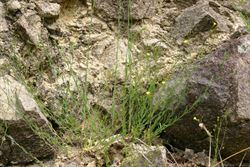
habit (Photo: Trevor James)
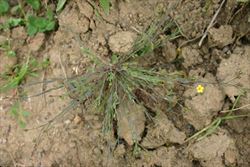
habit (Photo: Trevor James)

stems and leaves (Photo: Trevor James)

flowers (Photo: Trevor James)
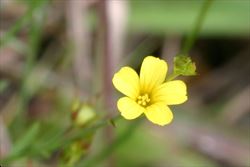
close-up of flower (Photo: Trevor James)
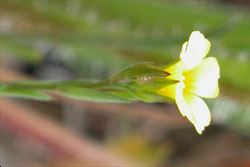
close-up of flower from side-on (Photo: Greg Jordan)
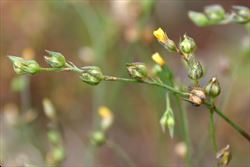
immature and mature fruit (Photo: Trevor James)
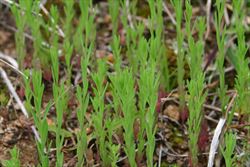
young plants with lower leaves (Photo: Trevor James)
Scientific Name
Linum trigynum L.
Synonyms
Linum gallicum L.
Family
Linaceae
Common Names
French flax, yellow flax
Origin
Native to northern Africa (i.e. northern Algeria, northern Libya and Tunisia), southern Europe (i.e. Albania, Bulgaria, Greece, Italy, Yugoslavia, France, Portugal and Spain) and western Asia (i.e. Cyprus, Lebanon, Syria, Turkey, Azerbaijan and Georgia).
Naturalised Distribution
Widely naturalised in southern Australia. It is most common in the coastal districts of central and southern New South Wales, Victoria, Tasmania, in south-eastern South Australia and south-western Western Australia. Also present in inland southern New South Wales, in other parts of South Australia and on Norfolk Island. It was also naturalised in south-eastern Queensland, but has not been recorded there in the last 50 years.
Naturalised overseas in south-western USA (i.e. California), Hawaii and New Zealand.
Notes
French flax (Linum trigynum) is regarded as an environmental weed in Tasmania, Victoria and Western Australia. This garden escape has become widely naturalised in open areas in Australia, particularly in grasslands and open woodlands. It is seen as a potential threat to one or more vegetation formations in Victoria and appears on some local and regional environmental weeds lists in this state (e.g. in Knox city and the Goulburn Broken Catchment).
French flax (Linum trigynum) has also been recorded in Phillip Island Nature Park in Victoria and numerous conservation areas in South Australia (i.e. Marino Conservation Park, Angove Conservation Park, Para Wirra Recreation Park, Morialta Conservation Park, Watts Gully Native Forest Reserve, Kyeema Conservation Park, Sturt Gorge Recreation Park, Belair National Park and Little Mount Crawford Native Forest Reserve).
In Tasmania, French flax (Linum trigynum) is widespread in grasslands and grassy woodlands and in south-western Western Australia it grows mainly in damp sites. In New South Wales it is chiefly found south from the Bulahdelah district, and is a weed of woodlands, grasslands and roadsides at Mount Annan Botanic Gardens south-west of Sydney.

